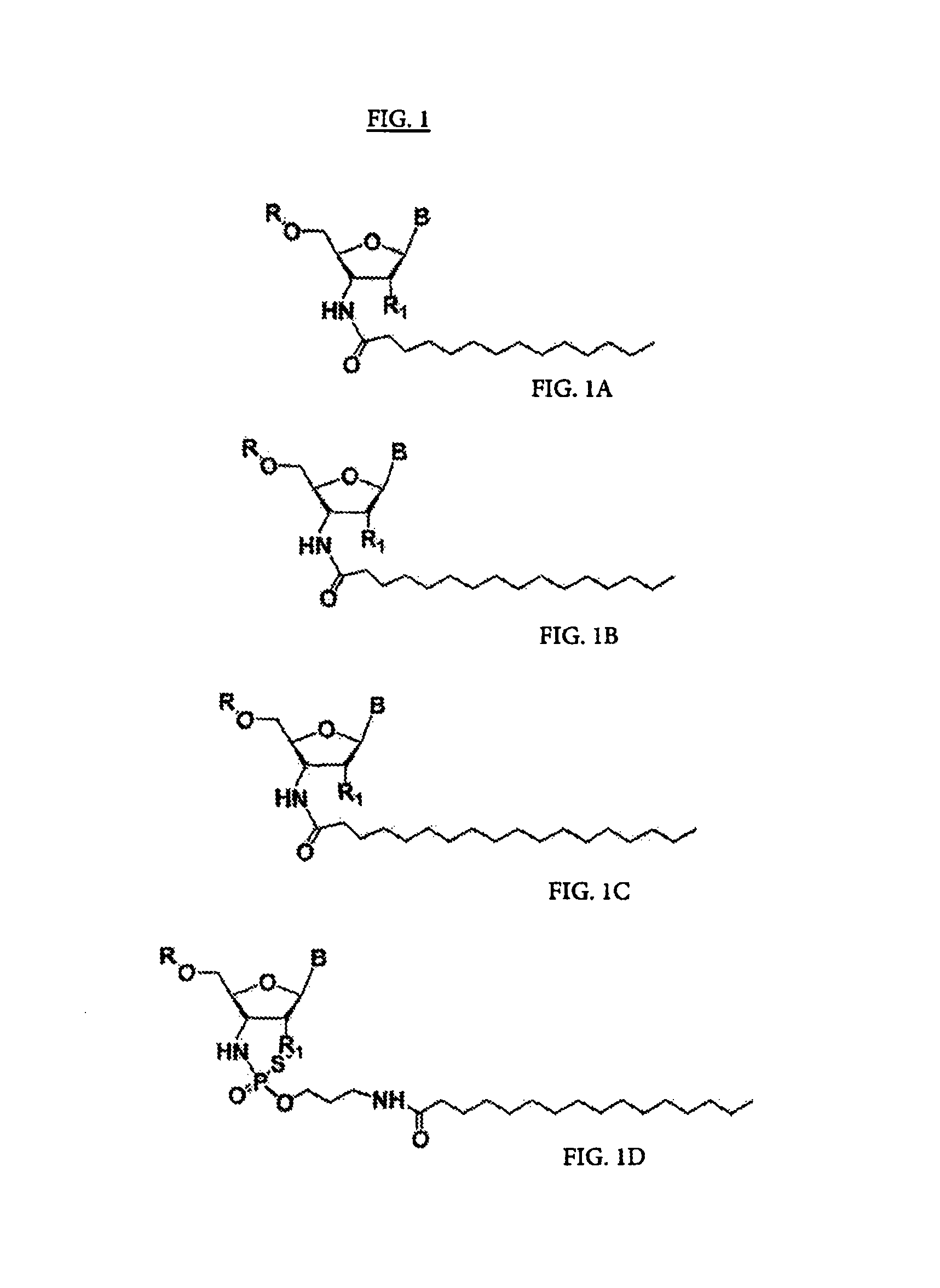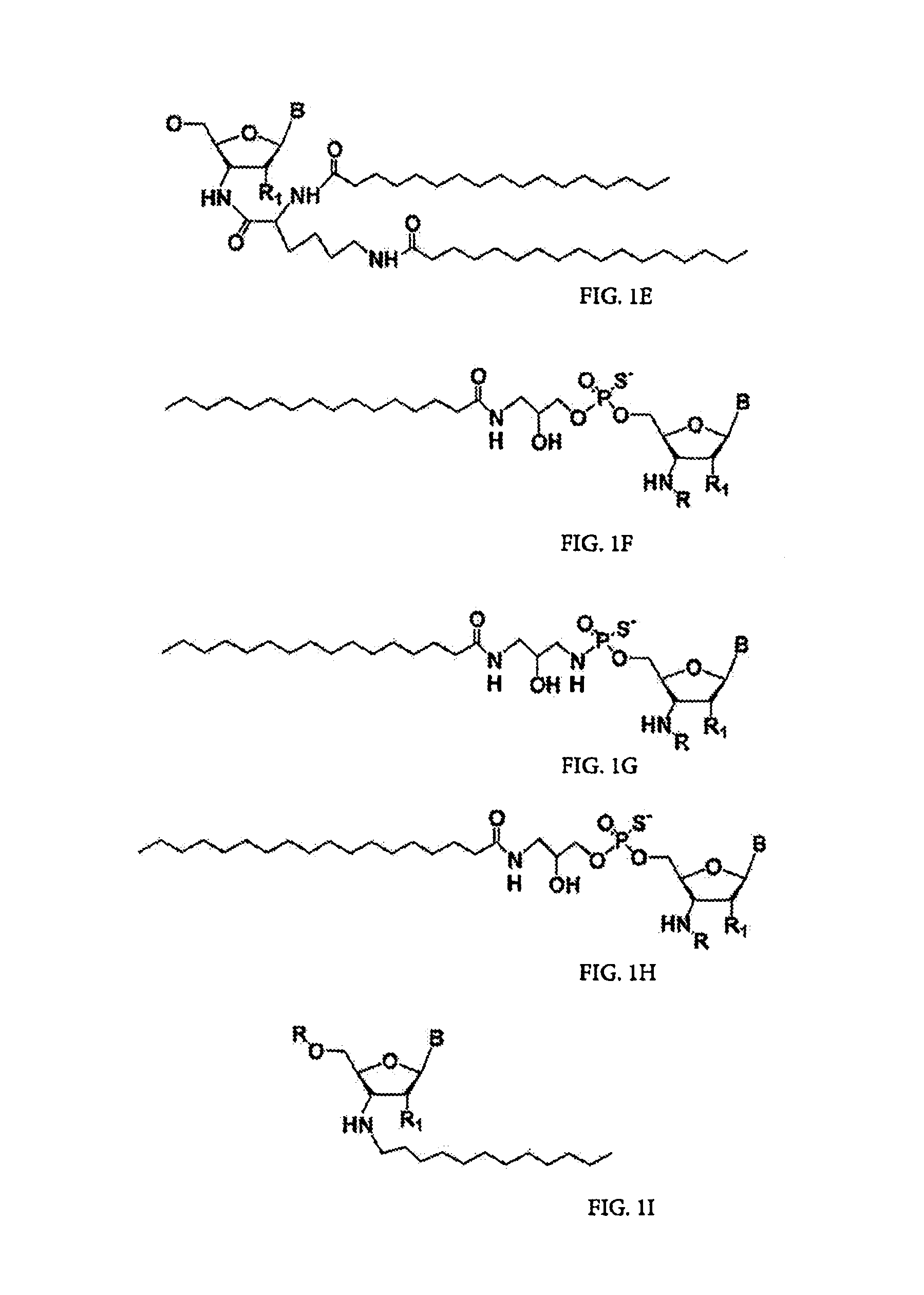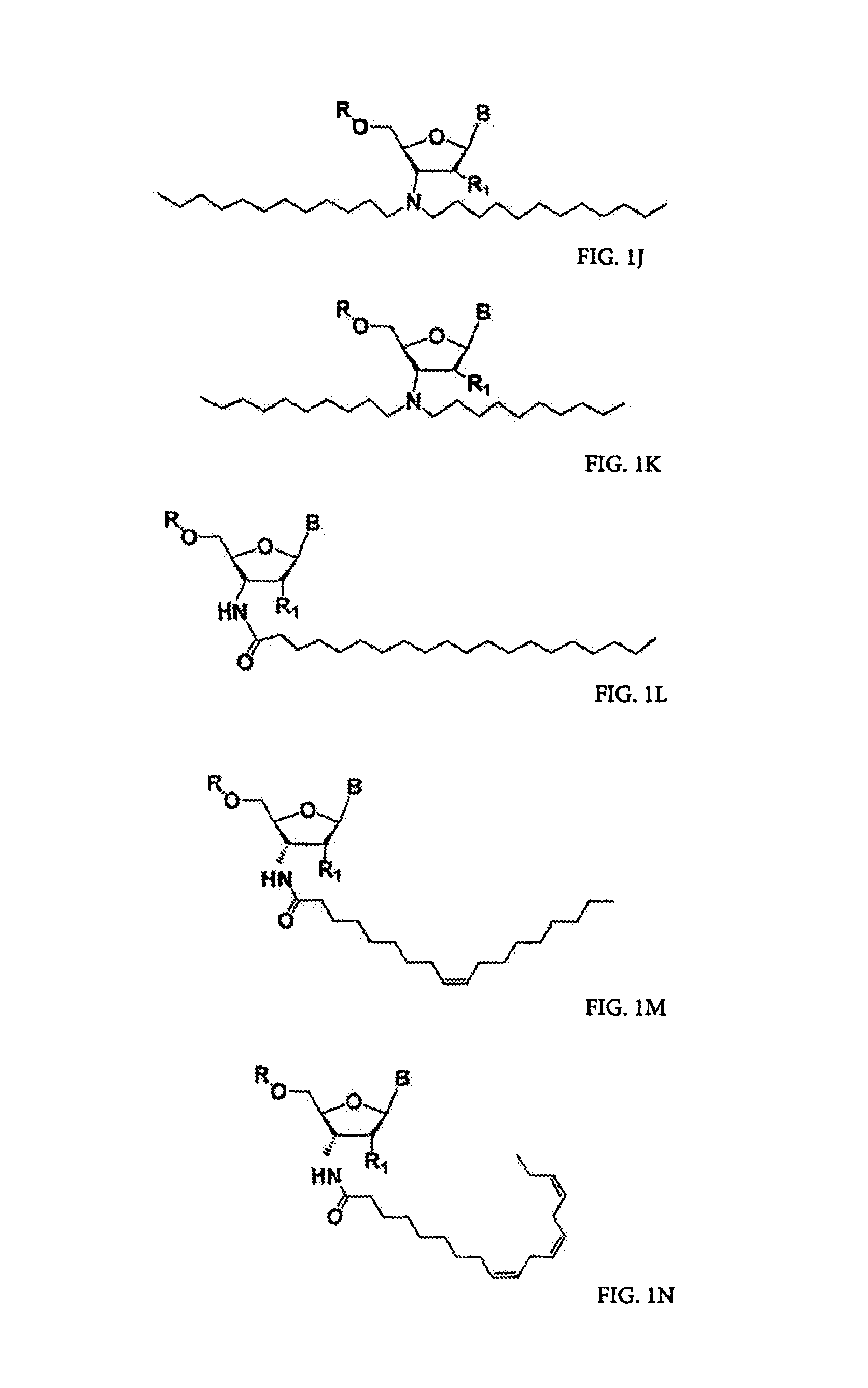RNA amidates and thioamidates for RNAi
a technology of amidates and thioamidates, which is applied in the field of rna amidates and thioamidates for rnai, can solve the problems of reducing the tolerance of these modifications, knocking down (partially or completely) the targeted gene, and intracellular expression of these therapeutics, so as to increase the resistance to endonucleases
- Summary
- Abstract
- Description
- Claims
- Application Information
AI Technical Summary
Benefits of technology
Problems solved by technology
Method used
Image
Examples
Embodiment Construction
[0002]1. Field of the Invention
[0003]The present invention relates to the use of N3′→P5′ phosphoramidate (NP) and N3′→P5′ thiophosphoramidate (NPS) oligonucleotide chemistry for RNA interference, optionally including the addition of covalently linked lipid groups. N3′→P5′ NP and N3′→P5′ NPS chemistry confers superior stability characteristics on the molecules, and the optional addition of lipid groups confers superior cellular uptake.
[0004]2. Background of the Invention
[0005]Several kinds of potential nucleic acid therapeutics have been explored over the last two decades, including RNA inhibitors such as antisense, ribozymes (catalytic RNAs), and artificial ligand inhibitors (“aptamers”). These therapeutics are designed to silence gene expression, and thus to alleviate the effects of undesirable genes, be they endogenous to an organism or exogenous, such as bacterial or viral in origin. Because it is difficult to apply these to cells externally, there has been significant interest i...
PUM
| Property | Measurement | Unit |
|---|---|---|
| length | aaaaa | aaaaa |
| structure | aaaaa | aaaaa |
| stability | aaaaa | aaaaa |
Abstract
Description
Claims
Application Information
 Login to View More
Login to View More - R&D
- Intellectual Property
- Life Sciences
- Materials
- Tech Scout
- Unparalleled Data Quality
- Higher Quality Content
- 60% Fewer Hallucinations
Browse by: Latest US Patents, China's latest patents, Technical Efficacy Thesaurus, Application Domain, Technology Topic, Popular Technical Reports.
© 2025 PatSnap. All rights reserved.Legal|Privacy policy|Modern Slavery Act Transparency Statement|Sitemap|About US| Contact US: help@patsnap.com



